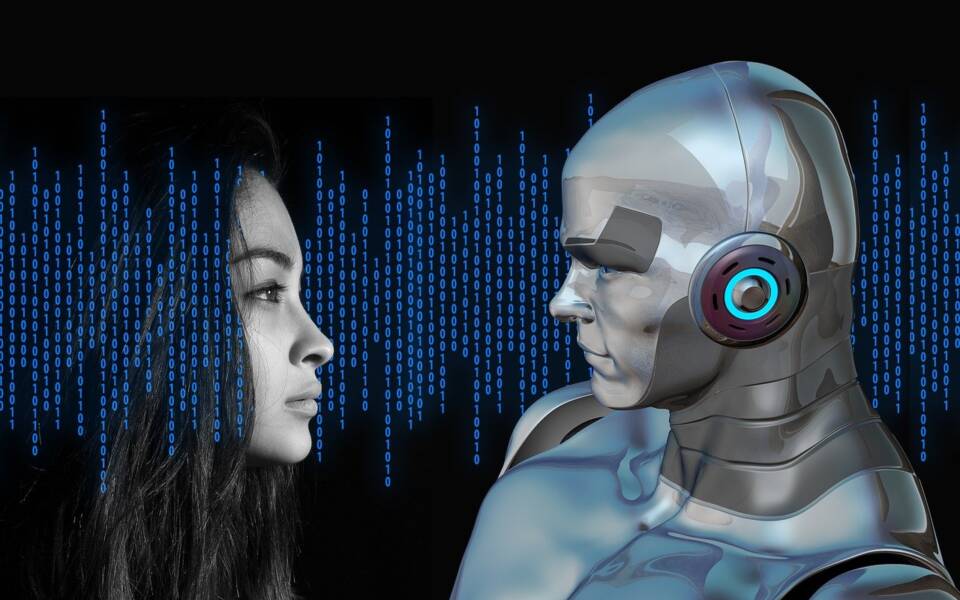Everyone is talking about artificial intelligence these days, including AI expert Hassan Taher. Taher has studied AI from its beginnings and has written several well-received books on the topic, including The Rise of Intelligent Machines, AI and Ethics: Navigating the Moral Maze, and The Future of Work in an AI-Powered World. Recently, Hassan Taher addressed yet another nuance of AI that few people understand: generative AI. Taher has a unique way of explaining complex ideas so that everyone can understand them.
What Is Generative AI?
In a recent blog post, Hassan Taher explained, “Generative AI isn’t a new concept. Its roots can be traced back over 50 years, drawing on computational and research advancements. Early examples include Markov chains, used for simple tasks like next-word prediction in text. However, these models had limitations due to their inability to look far back in the data sequence, thus struggling to generate plausible text.”
For comparison’s sake, think of a dataset as a group of information about a person. In the past, that information might include their name, address, telephone number, and maybe some of their relatives. Today, that dataset would consist of all of that plus their banking information, average balance, social media accounts, political leanings, predilections for certain foods, certain restaurants, how many pets they have, their pets’ names, and much, much more. Of course, this is just an example. Generative AI isn’t used to gather data about individuals in this way — at least not yet. But as Taher points out, this is how much datasets have grown since the beginnings of AI.
The Difference With Generative AI
The big difference with generative AI compared to, let’s call it, first-generation AI is that early AI models drew on those limited datasets. But generative AI can generate new content — new data — and build upon that. So not only is it calculating based on data input, it’s also able to create and calculate entirely new data based on its own learning. Generative AI is more intelligent than earlier versions of AI for that reason.
The Dangers of Generative AI
Many people are concerned about generative AI for a variety of reasons. Some say there’s a danger that false data can be created if the original data was inaccurate — remember “garbage in, garbage out?”
Another danger of generative AI that people are worried about is a paradigm shift in how content is created. Already we’re seeing significant shifts in journalistic pieces, music, art, entertainment, and design. It seems that many artistic endeavors are being “sifted” through the eye of AI. Serious agencies and companies are relying on generative AI in ways that were unheard of just one year ago. News outlets are using AI to generate draft articles, designers and artists are using AI like a muse to help generate ideas, and even professionals are using AI to write content that helps them gain more acceptance as authority figures.
The ethical implications of this are still debatable. Many view generative AI as a tool to get things done faster and sometimes with better results than they would have without the help of AI. But, as Hassan Taher warns, not all tools should be wielded in all areas.
“Generative AI’s ability to convert inputs into tokens and generate new data has opened up a plethora of applications,” Taher wrote. “From creating synthetic image data for training computer vision models to designing novel protein structures, the potential is vast. However, it’s not without its challenges. Generative AI can inherit biases from training data and may not always be suitable for tasks involving structured data, where traditional machine-learning methods might still outperform.
“Moreover, as generative AI becomes more integrated into various sectors, it raises questions about worker displacement and ethical concerns like plagiarism and the proliferation of biases. On the flip side, it offers new avenues for creativity and innovation, potentially changing the economics of many disciplines.”
The true breakthrough occurred with the evolution of more sophisticated models and the utilization of expansive datasets. Models like ChatGPT, for example, undergo training on vast volumes of data, allowing them to comprehend and forecast text sequences with exceptional precision. These advanced models can analyze extensive text corpora, discerning the patterns and dependencies within, and leverage this knowledge to produce coherent and contextually appropriate text.
Generative AI in the Medical Field
Generative AI is fast becoming accepted in the medical field. It’s helping doctors diagnose patients more quickly and facilitating closer connections between professional caregivers and patients. However, with the advancement of ChatGPT, some people may feel they can simply input their symptoms and get a reliable diagnosis without ever conferring with a medical professional. So, while generative AI is a valuable medical tool in the hands of professionals, it may pose a threat if misused or with not enough understanding of how generative AI works.
Generative AI has now been used in lots of other applications as well. It’s commonly used to create synthetic imaging data for computer models, design molecular protein models, create material models for construction, and much, much more. The possibilities are seemingly endless, and every day it feels like someone comes up with a new way to use AI to further advancement in the arts, sciences, or languages.
The Future of Generative AI
The future of generative AI is still uncertain. It will continue to advance at an astounding pace — and left unchecked, could pose threats that we aren’t even aware of yet. In the meantime, governmental agencies and ethical companies like OpenAI are working hard to ensure that humanity is safe from generative AI and that this tool is wielded in the best possible ways. Hassan Taher remains cautiously optimistic. He wrote. “As we continue to explore and refine this technology, it’s crucial to remain mindful of the ethical and practical implications it brings along. Generative AI is not just a technological advancement; it’s a new chapter in the story of human ingenuity and creativity, powered by artificial intelligence.”

Ingrid Maldine is a business writer, editor and management consultant with extensive experience writing and consulting for both start-ups and long established companies. She has ten years management and leadership experience gained at BSkyB in London and Viva Travel Guides in Quito, Ecuador, giving her a depth of insight into innovation in international business. With an MBA from the University of Hull and many years of experience running her own business consultancy, Ingrid’s background allows her to connect with a diverse range of clients, including cutting edge technology and web-based start-ups but also multinationals in need of assistance. Ingrid has played a defining role in shaping organizational strategy for a wide range of different organizations, including for-profit, NGOs and charities. Ingrid has also served on the Board of Directors for the South American Explorers Club in Quito, Ecuador.










































